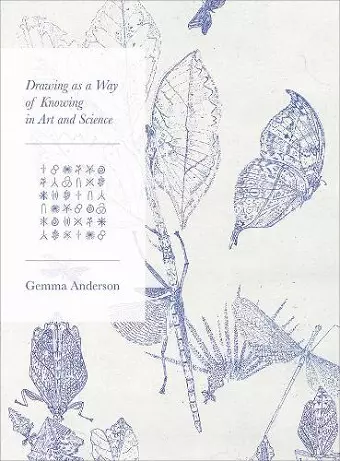In recent history, the arts and sciences have often been considered opposing fields of study, but a growing trend in drawing research is beginning to bridge this divide. Gemma Anderson’s Drawing as a Way of Knowing in Art and Science introduces tested ways in which drawing as a research practice can enhance morphological insight, specifically within the natural sciences, mathematics and art.
Inspired and informed by collaboration with contemporary scientists and Goethe’s studies of morphology, as well as the work of artist Paul Klee, this book presents drawing as a means of developing and disseminating knowledge, and of understanding and engaging with the diversity of natural and theoretical forms, such as animal, vegetable, mineral and four dimensional shapes. Anderson shows that drawing can offer a means of scientific discovery and can be integral to the creation of new knowledge in science as well as in the arts.
'The book allows a very close look into the artist's practice and the practice of collaborating scientists. Drawing procedures, such as the decision-making in the process of drawing, can be extremely interesting and fruitful for artists and scientists, but also for people from other disciplines. Key moments that are rarely ever in focus when talking about drawing are emphasized as vital ones, such as the gaining of knowledge through mimetic processes, the period of time in which a drawing is created or how drawing changes the way of seeing the world. Thus, the author’s project can be described in the very best sense as practice-based, but also as artistic research; eventually, it opens up a fantastic intellectual and artistic universe beyond that.'
-- Barbara Graf, JAR: Journal of Artistic Research'Gemma Anderson’s Drawing as a Way of Knowing in Art and Science takes us on a guided tour of her collaborations with scientists and mathematicians. On the way, we see stunning and illuminating illustrations, we meet a panoply of artists, mathematicians, scientists, philosophers, art historians and more, and we witness the processes of discovery and insight that happens through drawing.'
-- Barbara Tversky, Drawing: Research, Theory, Practice'The artist Gemma Anderson recognizes that the visual arts and natural sciences are both practices devoted to looking closer, looking longer, and looking deeper. They seek out those things that are not visible to our casual seeing or everyday believing-stretching our perceptions, and our representations, to new limits. In this way, the practice of drawing is a natural bridge to connect the epistemologies of the visual arts with that of sciences – Anderson’s new book, Drawing as a Way of Knowing in Art and Science guides us through her journey through this rich terrain. Anderson’s drawing and printmaking are guided by underlying principles, making her artworks at once well-studied and fantastical, detailed and open-ended. They function as documents of her creative engagement with biodiversity and mathematics, while also illustrating her philosophical views on how drawing can help us come to know. In terms of the ongoing art-science conversation, Anderson’s contribution is advancing how an artistic approach that embraces analogy, typology, and intuition (into a method she calls “Isomorphology”) can expand our thinking about how to both recognize and organize the natural world.'
-- Andrew S. Yang, SCIART Magazine'Drawing as a Way of Knowing in Art and Science presents a meaningful insight into the practice of drawing and how it can function as both an epistemology and scientific inquiry at the same time. As a document encouraging the continued interactions between the arts and sciences, it provides a valuable resource... As an important development into the ways drawing practice can enhance morphological insight, Gemma Anderson’s book achieves its aims and I would highly recommend it.'
-- Richard Bright, Interalia MagaISBN: 9781789380576
Dimensions: unknown
Weight: unknown
296 pages
